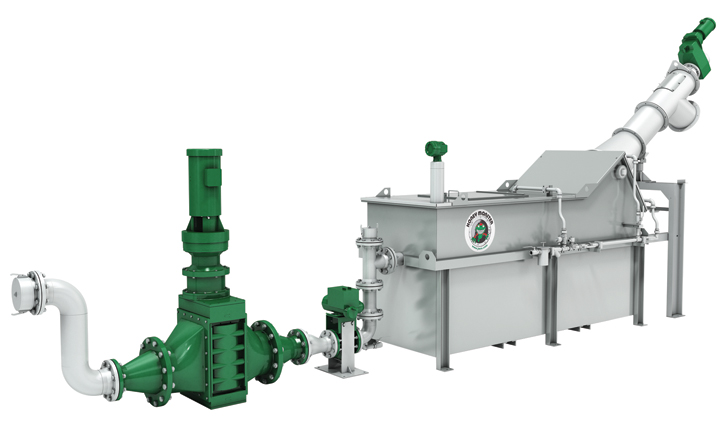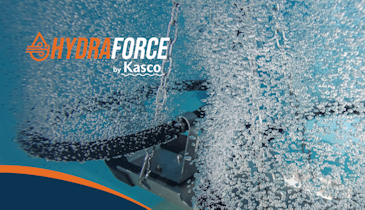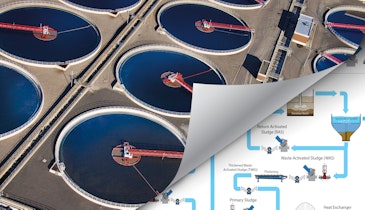Interested in Headworks?
Get Headworks articles, news and videos right in your inbox! Sign up now.
Headworks + Get AlertsThe Ventura Regional Sanitation District’s Liquid Waste Treatment Facility was experiencing a double threat to safety and productivity. The facility’s pumps, pipes and tank bottoms were continually clogging and breaking down because of “mopheads” — rags that knot together and form rope-like pieces. This meant maintenance personnel were exposed to raw wastes, not to mention the plant downtime required to undo the problems. Meanwhile, septage delivery tank drivers had the unpleasant task of emptying the sewage from their trucks onto an open parallel bar grate over the facilities’ receiving pit, which they then had to scrape clean with a bow rake. This smelly job was also time-consuming for the drivers. Thankfully, JWC Environmental had one solution that solved both these problems: a Honey Monster Septage Receiving System.
The Honey Monster system combines grinding, washing and dewatering capabilities all within one unit to provide a new gateway for waste into the plant’s treatment systems. The new process started with a dual-shafted Muffin Monster grinder to maximize surface area on solids, facilitating cleaning, while two dual-manifold internal wash water systems help break up soft organics. The waste is screened of inorganic debris, which is dewatered and separated from the influent that is allowed to pass into the plant. The system is screening out about half a cubic yard of debris per day that is hauled to the landfill without any additional treatment required. The Honey Monster accomplishes all this in 15 minutes or less for a typical septage truck, significantly reducing the truck unloading time by eliminating the need to manually empty the truck or clean smelly open pit grates.

The 90,000 gpd regional waste handling facility, employing a modified activated sludge treatment process, typically receives 45,000 gpd in the form of tanker truck waste from residential septic tanks, and then a waste mix from public chemical toilets, industrial debris, small waste-activated sludge plants, and industrial brines and restaurant grease. Previously, truck drivers based their volumes on their own estimations, with charges based on waste type and quantity, and then entered billing information by hand. After the septage receiving system installation, drivers were able to enter up to 16 codes for different loads into the MonsterTrack digital billing system and the pressurized tanker contents are then blown directly into the Honey Monster’s contained pipe connection for gravity discharge.
“We operated the new system for about a year and a half without it ever jamming up, even though we gave it plenty of opportunities,” says Ken Rock, director of water and wastewater for the district. “The components were well-integrated, and it was obviously designed by someone who had actually been in the business.”
The facility operators also noted that the Honey Monster dramatically improved working conditions and safety at the location as well, thanks to the reduced maintenance and manual work required to deal with debris and septage before the installation.






